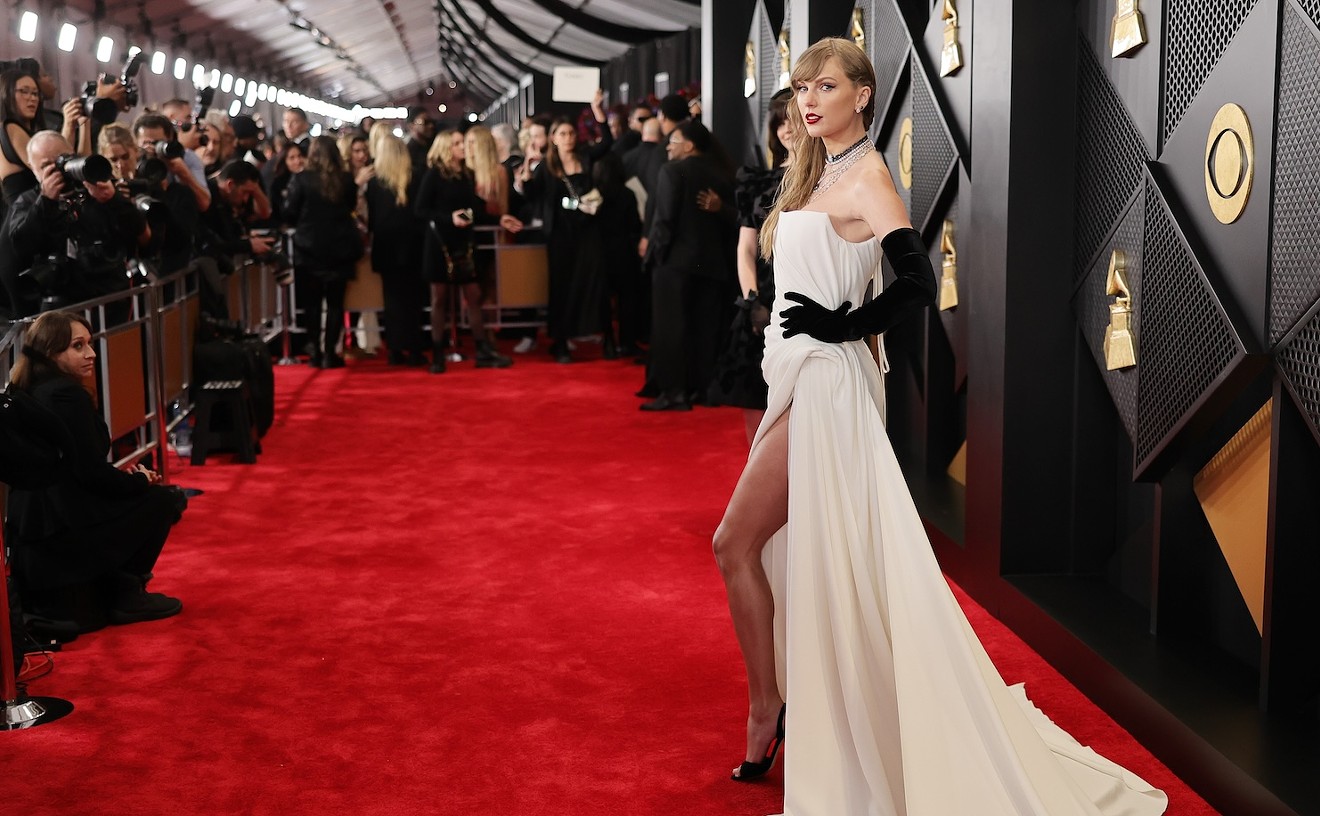Recording under his persona Plastikman, minimal mastermid Richie Hawtin first established himself as a standard-bearer for material as much about breath as breadth. Now, seven years since the last Plastikman album and 18 years since debuting the brand, Hawtin is prepping the Arkives, a comprehensive, limited-edition set including remastered, rare, and reinvented Plastikman tracks that chronicle how Hawtin molded his career narrative.
The Arkives boxsets are being manufactured made-to-order, with the pre-order period going through December 31 and the product delivered in February 2011. Score the set at plastikman.com/arkives.
See the cut for Part Two of Hawtin's Crossfade interview.
New Times: When you listen to your own retrospective, can you pinpoint the rooms that inspired and best received the material?
Richie Hawtin: Sheet One was very much inspired by the sounds and feelings of late-night Detroit underground parties. Those moments in the morning where only the hardcore people remained and they were either tired or induced into a weird state where they would be, for lack of a better word, slinky and elastic. That was the sound I was trying to create for those moments. Later with Consumed and Closer, I had pretty intense moments up north in Michigan, away in the forest, very little extraneous light, very little stars, just a deep darkness that I don't feel I have experienced very often. I always went back to that physical sense of being in that darkness when I was in the studio -- that feeling of space, depth, but also closeness. Darkness surrounds you, and it's not only vast but also close, and you find that in the later Plastikman albums.
Now, revisiting the material in clubs anywhere from Berlin to Miami, have you found any pockets of similar darkness?
I don't think there's as much darkness as back then. The megaclubs are all about lights, and the Plastikman live show we have one of the most sophisticated LED touring shows out there. So what we've done is added intensity and multimedia to what we're doing. But what I hope is that by using a combination of these things, you're still creating a physical, undeniable experience. My inspiration from those early systems, even if we were in a black box, we had our two or three lights, a trackspot and a dataflash, and their controls were right next to me. So I was manipulating and playing with the lighting and physical space, which informed what I did in the studio and was the beginning of what I'm trying to do with Plastikman now. It may be more lights, more flash, more scale. But it's basically me manipulating different types of technology in ways to create connection to the people out there - through sight and sound - and have it come together as something that is more than the sum of its parts.
You could say that every time you flash a light you create an echo of that darkness in a shadow.
Shadows are very interesting, and I think perhaps that's where I need to focus. We don't have as much darkness. But we definitely have plenty of weird corners to still peer into.
Did you tailor the material differently when composing for album or club?
I always had, especially in the last 15 years, a divide between Hawtin the DJ and Plastikman the artist. At moments, they came together as very similarly. And at other times, they were very polar. I think there's tons of material from Plastikman that works as full-on dance floor material. But even that material, it's still a bit weird. Whether it's a track like "Spaz," a snare track, it can all be odd and stripped down. It's a lot about how you use it, when you use it, how you contextualize it. So it can work on the dance floor. It just depends on how you set it up right. Otherwise, people would take Plastikman as a cerebral home-listening experience. But Plastikman is based on rhythm, low basslines, syncopation, all stuff that can make the body move, even if it's not the typical 4/4 kick and open hi-hat on three and seven.
If I were going to take the Arkives and place it on my shelf, who would you want to see sit to its left as your influences, and to your right as your contemporaries?
I would love to be close to the people I found inspiring right as I was recording. People like Daniel Bell and Aphex Twin. Before that I would like to see a connection to Kevin [Saunderson], Derrick [May], and Juan [Atkins]. Especially Derrick, he had a great album called Relics of his earlier Detroit works. And further into where we're at now I would feel a great connection to the style, recording technique, and sound structure of Ricardo Villalobos.
I've actually spoken to Villalobos before about his ideal "club of the future," which he described as a social daytime gathering within a circle of speakers tuned to play at low volumes but with the highest fidelity. His philosophy is certainly one of an immersive musical experience. But what is it specifically that you feel Plastikman and Ricardo Villalobos hold in common?
I think both have an understanding of space within music, and a willingness to allow tracks to develop and self-experiment. Ricardo is one of the only people I know these days who really allows his machines to breathe and go, which connects us all to those first people I mentioned on that bookshelf. We are all people who used computers to set situations up. But we always allowed things to be captured live, to breathe, to have an organic life to them. And that's what I love about electronic music. It's a confrontation, an entanglement where I can feel the structure of the machine and the chaos of the human being. That's what turns me on.
And how would an Ableton Live-on-a-laptop session breathe different than one of Roland TB-303 and TR-808?
I think the problem is, as soon as you get only inside the box people tend to try to over-perfect, to make things over-precise. You have all these arrangement windows and it begs you to timeline left to right the whole structure of your music, but I think the best music finds structure in itself. You have a band that comes together, someone makes a bassline or a chord, and people jam it out. With computer music you can't forget the jam, it can't be just about drawing in structure. It should come together naturally, not be over-computerized.
Going back, you had said the Arkives was your opportunity to survey how all the Plastikman material had evolved, then you could move forward. Does that mean you will retire the persona? Or just open a new chapter on it?
This doesn't mean it's the closing of the book, just the first chapter. Going back through the archives allowed me to see what had happened, what I'd done, what I liked about my work. And it sets me up in 2010 quite connected to so many things that happened in the last 18 years, not just with Plastikman, but with Hawtin, [and my record labels] Minus and Plus 8. I feel once again that the machines are running and my mind is running in that Plastikman frame. I'm hoping that people who are Hawtin fans will be equally up-to-date and open to a new chapter in that sort of sound.
-- Tony Ware
Richie Hawtin with Gaiser and DJ Stryke. Saturday, November 27. Mansion, 1235 Washington Ave., Miami. Doors open at 10 p.m. and tickets cost $30 via wantickets.com. Ages 21 and up. Call 305-695-8411 or visit mansionmiami.com.










